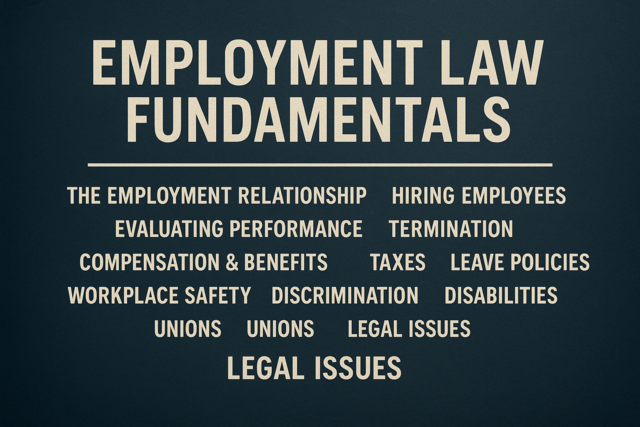Sometimes, our anger gets out of control and we need help learning new habits that will keep our reactions to the emotion of anger in control. This article will discuss the signs that anger has gone too far, when it is time to seek professional help, and what professional help can do to help you.
Do You Need Professional Help?
- Do people often tell you that you need to calm down or chill out?
- Do you feel like tension is a constant companion?
- Do you have a tendency to "bite your tongue" rather than say what you're thinking?
- Do you ignore your feelings, particularly if you are mad, by going to sleep, watching TV, or reading?
- Are you turning to alcohol or drugs as a way to soothe yourself?
- Are you having trouble sleeping at night?
- Do you feel like no one understands you?
- Do you swear more often than you should?
- Are your close relationships suffering?
- Have your friends started avoiding you?
If you answer yes to more than two of these questions, you may find some benefit in anger management counseling. If you said yes to more than five of these questions, you should definitely seek out counseling very soon.
Signs of Out-of-Control Anger
Most likely, if your anger is out of control, you already know it. Perhaps the police have visited you because of a domestic dispute that got out of hand; maybe you have a tendency to get into fights more often than most. Perhaps people are intimidated by you, or you are always yelling.
It is important that you realize when your anger is out of control before you end up paying for it with time in jail, lost jobs, or lost relationships.
Signs of out-of-control anger that you should be aware of (if you experience more than a couple of these regularly, you should consider seeking help):
- Frequent outbursts of emotion
- Yelling or screaming at people
- Throwing things
- Hitting or punching
- Getting into loud arguments or fights
- Breaking things
When to Seek Professional Help
Any time you feel you might hurt someone you should seek professional help to assist you in managing your anger. If you are suffering negative consequences as a result of your anger management � things like having trouble at work, not getting along with your family, losing loved ones, getting in trouble with the law, or having friends avoid you � you should seek help from a therapist or anger management specialist.
|
A Message From the National Domestic Violence Hotline
" At the National Domestic Violence Hotline, we believe that every caller deserves to be treated with dignity and respect. We believe that every family deserves to live in a world free from violence. We believe that safe homes and safe families are the foundation of a safe society. Until the violence stops, the hotline will continue to answer�One Call at a Time. Help is available to callers 24 hours a day, 365 days a year. Hotline advocates are available for victims and anyone calling on their behalf to provide crisis intervention, safety planning, information, and referrals to agencies in all 50 states, Puerto Rico and the U.S. Virgin Islands. Assistance is available in English and Spanish, with access to more than 140 languages through interpreter services. If you or someone you know is frightened about something in your relationship, please call the National Domestic Violence Hotline at 1-800-799-SAFE (7233) or TTY 1-800-787-3224." Their Website address is http://www.ndvh.org/. |
Anger management classes are designed to help you handle both the emotional feelings that come with being angry, and the physical responses you have to anger. Unfortunately, there is no way to avoid being around everything that could possibly make you angry, so you have to learn to deal with your anger in more constructive, healthy ways.
Anger management classes will help you identify your personal anger triggers and help you find ways to minimize exposure to those triggers. The classes may teach you breathing and relaxation exercises. Most classes include some kind of role-playing to help you practice new ways to express your anger and learn positive communication skills.
If you are hesitant to take anger management classes or speak to a counselor, try helping yourself change the way you react to feeling angry. Breathe deeply, talk to yourself, and tell yourself to calm down. Get physical exercise and do meditation or yoga to help you learn how to be focused and calm.
Try to focus on changing your internal messages. Instead of cussing something out inside your mind, talk yourself through the emotion. Allow yourself to feel angry, and then work to recognize why you are angry, how your own expectations might have played a role in it, and how you can resolve it.
Remember that overreacting to your anger will most likely cause both you and the target of your emotion more upset than it is worth, that it will not fix anything -- and not only will it not make you feel better, it might actually make things worse.
By forcing yourself to think about your anger, you will diffuse it. You will not be able to stay angry if you start analyzing. If there are frustrations in your life that are causing you stress and anger, set goals and work on solving your problems. Write down your goals and make a promise to yourself to work toward them. Practice open, loving communication with your friends and family. Think before you say anything; do not make assumptions.
Do not forget that you need to take care of you: Take breaks, go for walks, and focus on your needs; say no when you need to; remove anger-inducing experiences from your life.
If in the end you decide to talk to an anger management counselor, try to be open and communicative. Definitely be honest about how you behave when you are angry. Be sure to choose someone who has experience in working with anger management. Do not forget: Anger is a normal, healthy emotion. It is how we handle anger that sometimes gets us in trouble.
Effectively Handling Anger � A Review
- Don't bury your feelings or behave in a way that will only make you angrier (whether that is by passively allowing the things that make you angry to continue, or by being overly aggressive in your response to anger without thinking). Be direct and honest and focus on your feelings.
- Don't be violent or cruel in your reaction to feeling angry. Remember that you have a choice: Anger is a natural emotion, but it is your emotion to own. Don't blame your feelings on others; own them.
- When you speak to someone about making you angry, be sure to speak about yourself in the "I": "I feel angry when this happens. I would like this to be different." Don't accuse or use a form of "You did this to me and now you're going to pay" communication.
- Take care of yourself and meet your needs even when you are feeling angry. Don't withdraw or punish yourself; don't lash out and punish others. Find ways to reach out and find ways to comfort and soothe yourself.
- Recognize that feeling angry is normal and a healthy part of life , but that reacting violently or making others feel small or worthless is not healthy. Not being in control of your anger can cause you to tear apart your relationships or end up in trouble.
- Practice empathy. Think about what others might be experiencing or feeling.
Summary
. If you are at risk of hurting someone close to you, or if you are already damaging your close relationships with your friends, your family, and your job, seek help immediately.
Anger management classes can help you learn to identify your angry feelings before your reactions are out of control. You can learn new coping skills and ways to effectively handle your angry feelings. You will also learn how to communicate more successfully about your anger.
The world around us, in so many ways, has become a dangerous and violent place. There are stories in the news every day about violence in schools and homes, about road rage and workplace violence, about prejudice and hatred. All of these behaviors stem from anger that is not being managed properly. It can change.
Breathing exercises can make you dizzy or lightheaded, so be careful and use caution. If a specific exercise recommends sitting to perform it, it is important that you comply.
Never conduct any kind of exercise without a physician's consent.
Peaceful breathing. Stand or sit. Relax your body and try to calm your mind. Inhale slowly through your nose while counting slowly to four. Exhale slowly through your mouth while counting to six. Hold the breath for a couple of seconds, and then let the air out steadily. You should try to exhale completely. Don't hunch your shoulders, and as you breathe in, let the air expand down into your abdomen. Repeat several times.
Belly breathing. Lay on the floor. You can use a pillow to prevent your lower back from straining. The function of breathing occurs when the diaphragm � the muscle that separates your lungs from your abdominal cavity � is drawn down, and your lungs can expand. By lying on your back, you can use your hands to find the bottom of your rib cage and, as you inhale, apply light pressure on your abdomen toward the bottom of your body. Allow yourself to feel your belly expand as you draw in your breath; that's the way you draw in the fullest possible breath and expand the lungs. Belly breathing is much healthier breathing than chest breathing, where only the upper portion of the lungs is being used at full capacity. Repeat this breathing exercise for 10 to 15 minutes.
Reverse breathe. Sit with your back firmly upright and your shoulders squared. Exhale � before you take a breath � completely. Push as much air out of your lungs as you can. Draw in a full breath � a real belly breath. Once you feel as though you've drawn in all the air you can, force yourself to draw in slightly more air. You should feel the expansion in your belly and through your rib cage. Hold for one or two seconds, then release slowly. Pull in your abdominal muscles as tight as you can, while you are exhaling. Repeat five to 10 times.
Humming. Repeat the steps for the reverse breath above; however, this time, as you exhale, hum lightly as you exhale. Be sure to squeeze your abdominal muscles as tightly as possible while exhaling and humming.
Short breaths. This is one of the exercises that may be more likely to cause light-headedness, so be sure to stay seated while doing this exercise.To begin, sit on a chair with your spine straight and your shoulders squared. Without exhaling in between, draw in three short breaths through your nose. Hold for two to three seconds, then release and exhale through the mouth. Immediately repeat. Repeat the entire exercise four to six times. Stop if you become light-headed.
Puffing. Puffing exhales puts a bit of pressure on your lungs, making the airway stay open a bit longer. It's a great method to use if you are exercising heavily and feeling out of breath. To do this exercise, either sit or stand with your back straight. Inhale deeply, filling your lungs. As you exhale, puff your cheeks and blow the air out of your mouth through tightened, pursed lips. It should take you three to four times as long to exhale the air as it did to inhale the air. Repeat four to six times.
Waking breath. This is a great breathing exercise to do if you are feeling drowsy at work and think you might doze off. It also exercises your diaphragm, a key muscle in the function of breathing. In this exercise, you should remain seated. You will be breathing in and out through the nose, keeping the mouth shut but not tensed. Only do the exercise for about 10 seconds at a time, since it may make you light-headed. To perform the exercise, inhale short breaths through your nose and immediately exhale them through your nose. Repeat for 10 seconds, then stop and breathe normally. Do for 10 seconds out of every minute for 10 minutes.
Breath Bends. This exercise will help you empty your lungs completely so that you can improve the amount of oxygen you intake. Stand with your feet shoulder-width apart, with your back straight and your knees relaxed. Inhale deeply. As you exhale, bend at the waist, forcing as much air out of your lungs as possible. Straighten back up as you inhale and continue to repeat four to six times, or until you get too light-headed to continue.
Relaxation Exercises
Relax. This exercise won't seem helpful compared to all of the other ones you've been doing, but if you had to choose just one exercise out of this whole section, I would think this might be the right one. It's a very simple exercise, but requires two very important things: your willingness to suspend your thoughts, worries, doubts, and concerns for a few minutes -- and a quiet place you can be without interruptions. It doesn't matter if that's the bathroom, or if you have to escape to a park bench at your local park. You only need 15 to 20 minutes. To do this exercise, go to your quiet, uninterrupted place. Make it as quiet and as dark as possible. Sit in a comfortable position. Try to quiet your mind � this is not a time to make to-do lists or play back the last conversation you had with your boss. For 15 or 20 minutes, every day, just sit quietly. Give yourself those minutes of pure relaxation. Let your mind be empty and your body be relaxed. Breathe, but don't think about breathing or any other exercise. Try to let go of all of your tension. You'll love yourself for it later.
Full body relaxation. The best way to do this exercise is in bed at night. You should be lying down on your back. This exercise is commonly used in biofeedback and can have an overall positive effect on your entire body, but will certainly have an impact on your healthy breathing. Full body relaxation requires you to specifically focus on each and every part of your body and consciously make each part relax and de-tense. It's best to start with the toes and work your way up. Spend at least 10 to 15 seconds on each area, although some stubborn areas may require much longer. When working on full body relaxation, don't forget your toes, feet, ankles, calves, knees, thighs, rear end, hips, pelvis, waist, abdomen, lower back, chest, shoulders, and neck.
























